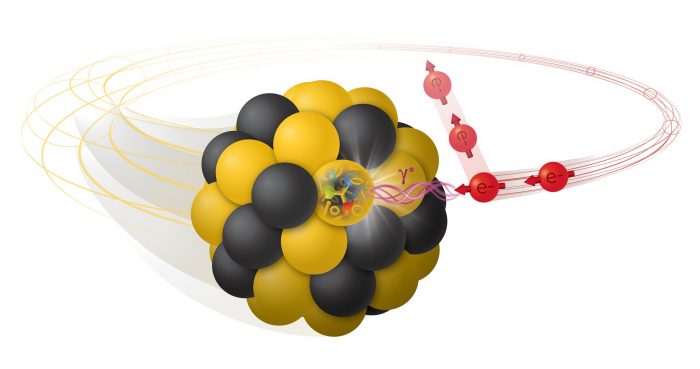BNL gets $224M infusion as part of Inflation Reduction Act

National labs, including Brookhaven National Laboratory, received considerable additional funds as a part of the federal Inflation Reduction Act.
BNL, which will get an additional $224 million over a five-year period, will collect the additional funding from the Department of Energy’s Office of Science to support several projects designed
In a statement, Secretary of Energy Jennifer Granholm called the additional funds for energy-related research and support, which total $1.5 billion, “one of the largest ever investments in national laboratory infrastructure” and suggested that the effort would “develop advanced energy and manufacturing technologies we need to advance the frontiers of science and tackle tomorrow’s challenges.”
At BNL, the Electron-Ion Collider, an enormous project that will start construction in 2024 and should start running experiments in the early part of the next decade, will receive $105 million.
BNL is building the EIC in partnership with the Thomas Jefferson National Accelerator Facility in Virginia, which will also receive $33 million for work towards the new facility.
As its name suggests, the EIC will collide electrons and protons or heavier atomic nuclei and hopes to make numerous discoveries, including providing an understanding of how the energy from quarks and gluons provides the mass of a proton.
Additionally, the EIC will provide advances in health and medicine, national security, nuclear energy, radioisotope production and industrial uses in particle beams. Research on the technologies that will become a part of the EIC will advance the development of magnets and other particle accelerator parts. These advances could lead to energy efficient accelerators, shrinking the size and costs of future accelerators, which could attack cancer cells, design solar cells and batteries and develop drugs and medical treatments.
While the additional funds will help advance the development of the EIC, the total cost is considerably higher, at an estimated $1.7 billion to $2.8 billion.
Beamlines
Additionally, the Office of Science will provide $18.5 million to speed the creation of three new beamlines at the National Synchrotron Light Source II.
The NSLS II already has a host of beamlines that enable researchers from around the world to study the structure of batteries as they are operating, catalysts that help tap into energy sources, and biologically active molecules that could play a role in understanding basic biochemistry or that could lead to the development of drugs.
The new beamlines, which, like others at the NSLS II, have three-letter abbreviations. The ARI will provide a complete picture of the electronic structure of a sample, particularly in connection with temperature, chemical, structural and atomic variation.
ARI will help understand and control the electronic structure of next generation quantum materials.
CDI, meanwhile, will explore the condensed matter macroscopic and microscopic physical properties of matter, including the solid and liquid phases that arise from electromagnetic forces between atoms. CDI is in its final stages of its design.
The SXN will provide element access from carbon to sulfur. The beamline will offer measurements of different signals, such as X-ray fluorescence and total electron yield absorption, which is important in catalysis, condensed matter physics and environmental science.
The DOE is also providing $20 million for five Nanoscale Science Research Centers. The Center for Functional Nanomaterials is leading the effort to revitalize the nanoscience infrastructure.
The funds will accelerate the acquisition, development and installation of five instruments, which will advance research in fuel cells, solar cells and other materials that are part of the country’s efforts to develop cleaner forms of energy.
A/C and Heating
BNL will receive $33 million to support an upgrade to the ATLAS detector at the Large Hadron Collider in Europe’s CERN laboratory. The upgrades will enable a high-energy particle detector to make use of increased particle collision rates.
The lab, which focuses on energy research, will also receive $14.5 million towards infrastructure improvements that will increase the efficiency in distributing electricity and heating and air conditioning in labs throughout the facility.
Finally, the lab will receive $1 million to develop instrumentation for a nuclear physics experiment that seeks to find neutrinoless double beta decay, which is led by the Lawrence Livermore National Laboratory.
BNL Lab Director Doon Gibbs described the funding as an investment in the nation’s innovation-based economy.
The funding will support “research with direct impact on the development of clean energy technologies as well as ground-breaking basic research in nuclear and high-energy physics — fields that could lay the foundation for future advances,” Gibbs said in a statement.






